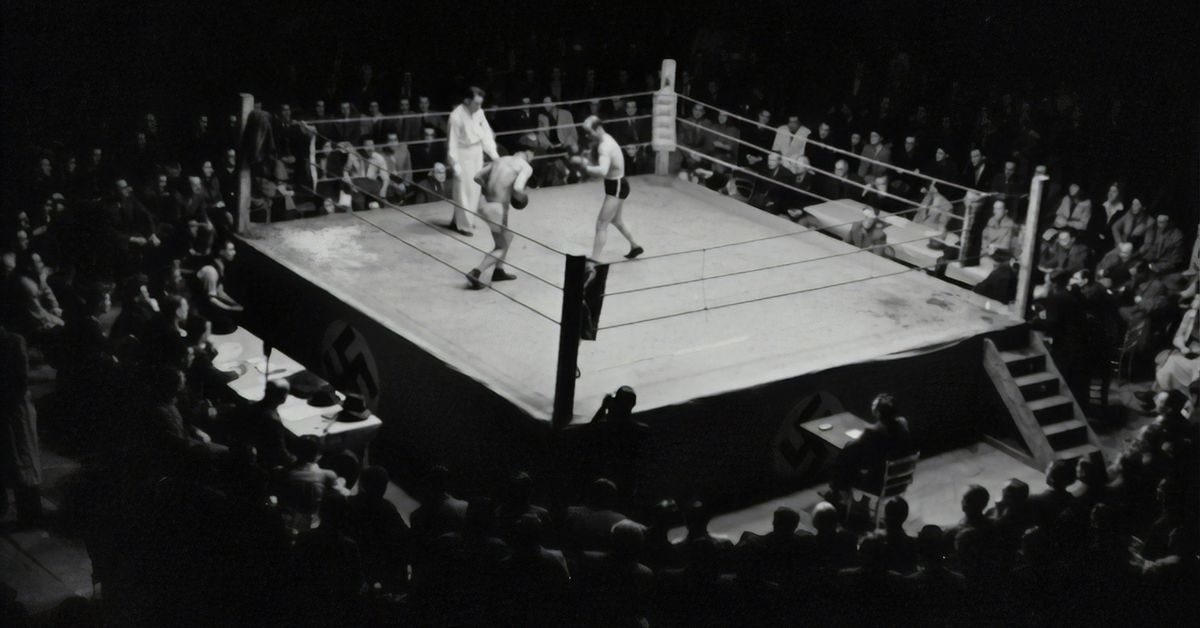Secrets of MMA Training: What Makes Their Conditioning So Effective?
In the world of combat sports, Mixed Martial Arts (MMA) stands out not just for its explosive action and visceral appeal, but also for the incredible athleticism of its fighters. Have you ever wondered what enables these athletes to endure grueling bouts that test the very limits of human endurance? The secret often lies in their conditioning—a multifaceted approach that blends various training disciplines to create well-rounded fighters. It’s not just about throwing punches or executing takedowns; it’s about preparing the body and mind for the unique challenges of the octagon.
As someone who has spent years covering various sports, I can tell you that MMA training is like a carefully crafted symphony, where every note contributes to the overall performance. From the explosive power of a knockout punch to the relentless pace of grappling exchanges, conditioning plays a pivotal role. So, let’s delve into the secrets behind MMA conditioning and uncover what makes it so effective.
The Foundations of MMA Conditioning
To understand how MMA fighters condition themselves, we first need to explore the foundational elements that contribute to their physical and mental resilience. In essence, effective conditioning in MMA hinges on three main components:
- Endurance: The ability to sustain prolonged physical activity.
- Strength: The capacity to exert force against resistance.
- Speed and Agility: Quickness and flexibility, essential for executing techniques effectively.
Each fighter’s conditioning regimen is tailored to their unique strengths and weaknesses, but all elite fighters share a commitment to these foundational elements. I remember chatting with a former champion who emphasized that while technique is vital, it’s the conditioning that allows you to implement those techniques effectively under pressure.
Cardiovascular Endurance: The Heart of the Matter
Cardio—an often-dreaded word in the fitness community. In MMA, cardiovascular endurance isn’t just about looking good on a treadmill; it’s about survival in a high-stakes environment. Fighters spend countless hours building their aerobic and anaerobic capacity to ensure they can push through the fifth round, even when fatigue sets in.
A typical MMA training session might include:
- Long-distance running or cycling for aerobic conditioning.
- High-intensity interval training (HIIT) to boost anaerobic capacity.
- Sport-specific drills that mimic fight conditions, like sparring or grappling rounds.
The beauty of this approach is its variety. Fighters often mix in different forms of cardio—think sprints, jump rope, and even swimming—to keep things fresh and engaging. After all, nobody enjoys the monotony of endless running! (Trust me, I’ve tried.)
Some studies suggest that incorporating varied cardiovascular exercises can significantly enhance endurance performance. One study published in the Journal of Sports Science indicated that MMA athletes who included HIIT in their training saw marked improvements in their fight performance. It’s a testament to the effectiveness of conditioning that isn’t confined to a single method.
Strength Training: Power Behind the Punch
If cardio is the heart of MMA conditioning, then strength training is undoubtedly the backbone. But here’s the kicker—strength training in MMA isn’t about bulking up or being the biggest guy in the room. It’s about functional strength—power that translates directly to performance in the cage.
Many MMA fighters incorporate a mix of traditional weightlifting and bodyweight exercises. They aim to develop explosive power through:
- Olympic lifts, such as cleans and snatches, for overall strength.
- Compound movements, like squats and deadlifts, to build foundational strength.
- Plyometric exercises, such as box jumps, to enhance explosiveness.
It struck me during a recent interview with a strength and conditioning coach that the focus isn’t just on lifting heavy weights. Instead, they emphasize the importance of maintaining balance and flexibility. A strong fighter is one who can control their body while delivering powerful strikes or executing complex submissions.
Speed and Agility: The Dance of the Octagon
It’s one thing to be strong and fit, but in MMA, the ability to move quickly and with precision can make all the difference in the heat of battle. Speed and agility training helps fighters evade strikes, close distances, and execute techniques before their opponents can react. This aspect of conditioning includes:
- Agility drills, such as ladder exercises and cone drills, to improve footwork.
- Reaction time training using tools like reflex balls or partner drills.
- Sport-specific movements that enhance timing and coordination.
During my time covering various fighters, I’ve always been amazed at how some athletes seem to glide across the mat with an effortless grace. It’s not just talent; it’s the result of countless hours of speed and agility training. You can almost see it in their eyes—each fighter is not just reacting but anticipating, a skill honed through rigorous conditioning.
The Role of Mental Conditioning
While physical conditioning is crucial, let’s not forget the mental aspect—arguably the most overlooked yet vital component of an MMA fighter’s training. Conditioning the mind is just as important as conditioning the body, and fighters often engage in various techniques to sharpen their focus and resilience. Here are some ways they achieve this:
- Meditation and mindfulness exercises to enhance concentration.
- Visualization techniques, where fighters mentally rehearse their fights.
- Working with sports psychologists to develop coping strategies and mental fortitude.
It’s fascinating to see how fighters navigate the psychological demands of combat sports. I once spoke to a fighter who described visualization as his “secret weapon.” He mentioned how picturing himself executing techniques flawlessly before entering the cage helped him build confidence. It’s a compelling reminder that the mind and body are inseparable in the world of MMA.
Nutrition: Fueling the Fire
Of course, all this training would be rendered ineffective without proper nutrition. Fueling the body efficiently is essential for optimal performance, recovery, and overall health. In the world of MMA, fighters often follow a strict diet tailored to their individual needs. This could include:
- High-quality proteins for muscle recovery and growth.
- Complex carbohydrates for sustained energy during training.
- Healthy fats to support overall bodily functions.
What’s more, hydration is key. Fighters often emphasize the importance of staying hydrated, especially during intense training camps (and let’s be honest, who hasn’t felt the effects of dehydration?). I recall a conversation with a nutritionist who explained that even a small dip in hydration levels can significantly impact performance. It’s a simple yet often underestimated factor.
Recovery: The Unsung Hero
Now, let’s talk about recovery—a critical aspect of conditioning that sometimes gets overshadowed by the hustle and grind of training. Fighters need to recover effectively to ensure they can continue pushing their limits. Recovery strategies can include:
- Active recovery sessions, like light jogging or swimming.
- Stretching and mobility work to prevent injuries and improve flexibility.
- Utilizing techniques like massage therapy, foam rolling, and ice baths to alleviate soreness.
It’s amusing to think about how many athletes I’ve seen groaning on the mats after a hard session, yet their commitment to recovery is unwavering. I once watched a fighter who had just finished a grueling sparring session hop straight into an ice bath. “This is where the magic happens,” he said with a grin. And you know what? He wasn’t wrong.
The Influence of Coaching
No discussion about MMA conditioning would be complete without acknowledging the role of coaches. An effective coach can be the difference between a good fighter and a great one. They’re the ones who tailor training regimens, offer guidance, and help athletes navigate the complexities of their conditioning journeys.
Coaches often have extensive experience, either as former fighters or trainers, and their insight can be invaluable. I remember attending a seminar where a renowned MMA coach shared his philosophy on conditioning, emphasizing the importance of individualized plans. “What works for one fighter might not work for another,” he said. It’s a mantra that resonates in the world of MMA, where each athlete’s journey is unique.
Conclusion: The Art of Conditioning
As we wrap up this exploration of MMA conditioning, it’s clear that the effectiveness of their training lies in a holistic approach. From cardiovascular endurance and strength training to speed drills and mental conditioning, each component plays a vital role in preparing fighters for the challenges they face in the octagon.
It’s a blend of science and art, where fighters push their bodies to the limit while also nurturing the mind. The next time you watch an MMA bout, take a moment to appreciate the years of dedication and conditioning that culminate in those electrifying performances. After all, behind every knockout or submission is a fighter who has put in the work—sweat, tears, and all.
So, whether you’re a seasoned fan or just curious about the sport, remember: conditioning is not just a part of MMA; it’s the very essence of what makes these athletes extraordinary. And who knows, maybe there’s a fighter inside you waiting to emerge, too. (Just don’t forget to hydrate!)









